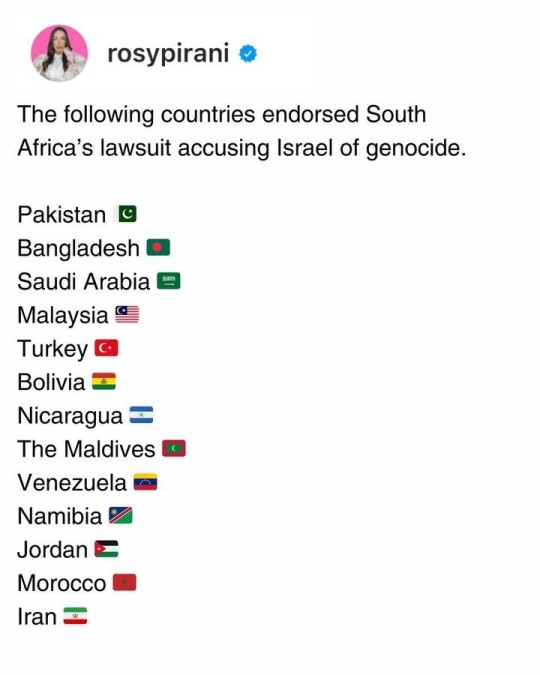#Bangladesh
Text
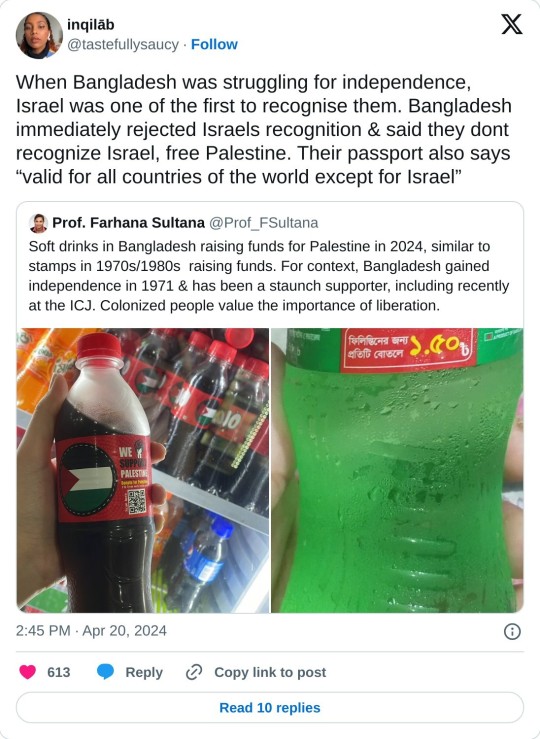
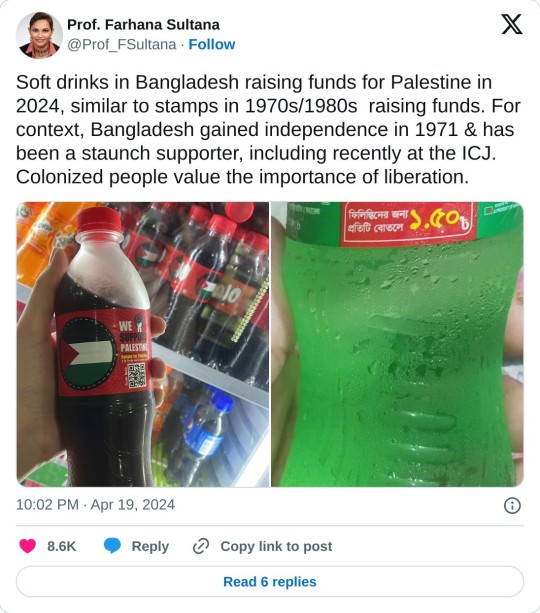
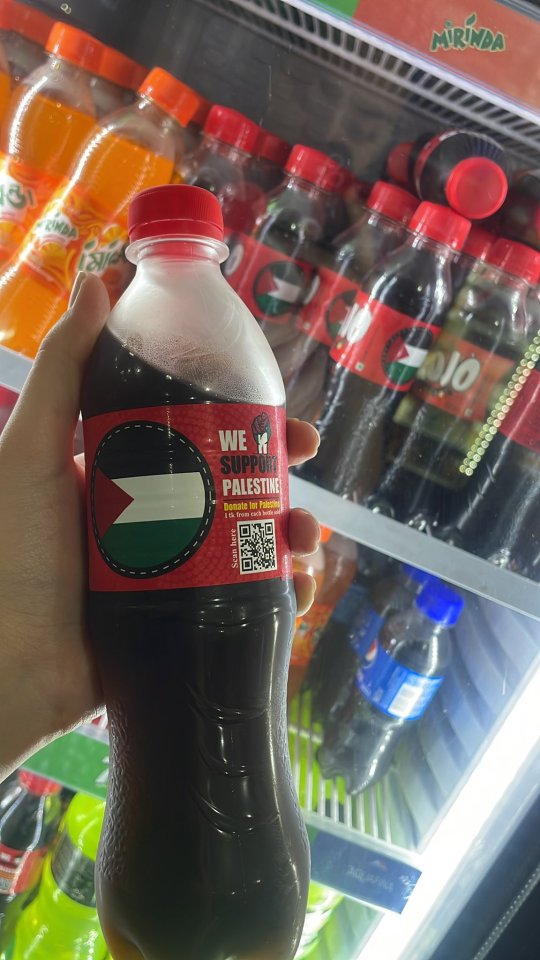

#feminist#social justice#free palestine#palestine#free gaza#current events#bangladesh#solidarity#israel is a terrorist state#israel is committing genocide#israel is evil#israel is a war criminal#palestinian liberation
6K notes
·
View notes
Text

(Nov. 7)
@MorePerfectUS: Bangladesh is raising the minimum wage for garment workers by 56% after workers led mass protests. Weeks of strikes had shut down factories for brands like Gap, H&M, and Zara. Worker groups plan to keep protesting, saying the new $113/month wage falls far short of fair pay.
10K notes
·
View notes
Text
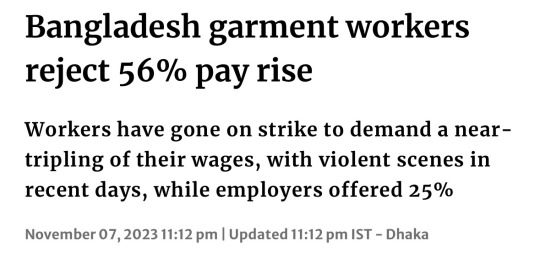


Source
Huge win!
6K notes
·
View notes
Text


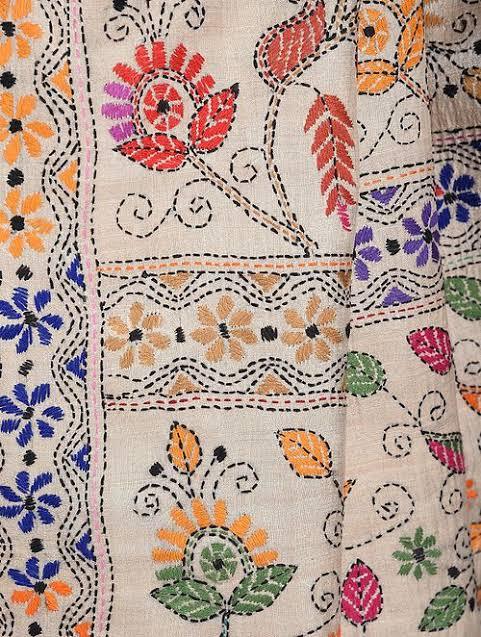




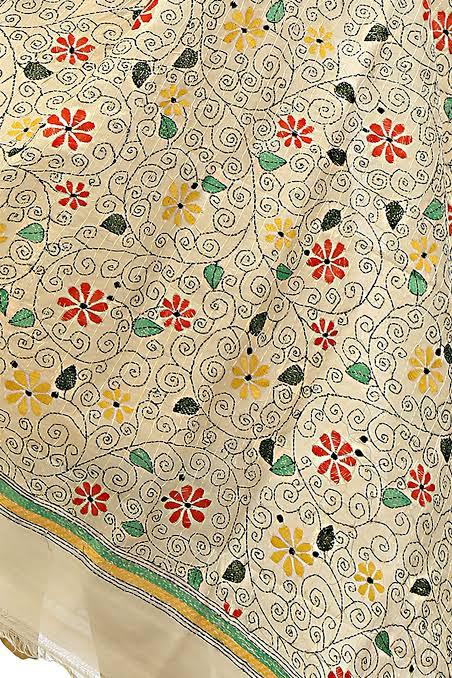

Kantha (Bengali: কাঁথা) is a form of embroidery originating in Bengal region, i.e. Bangladesh and the Indian states of West Bengal, Tripura and parts of Assam. It has its roots in nakshi kantha, an ancient practice among bengali women of making quilts from old saris and rags by sewing them together. In modern usage, kantha generally refers to the specific type of stitch used. The kantha needlework is distinct and recognised for its delicacy. The stitching on the cloth gives it a slightly wrinkled, wavy effect. Today, kantha embroidery can be found on all types of garments as well as household items like pillowcases, bags and cushions.
While it is an increasingly diversifying art form, traditional kantha embroidery motifs are still sought after. Traditional kantha embroidery is two-dimensional and are usually of two distinct types: geometric forms with a central focal point, carried over from the nakshi kantha tradition and influenced by islamic art forms; and more fluid plant, floral, animal and rural motifs with stick-figure humans depicting folklores and rural life in Bengal.
1 / 2 / 3 / 4 / 5 / 6 / 7 / 8 / 9 | textile series
#bangla tag#textiles#ots#kantha#nakshi kantha#bengal#bengali#bangladesh#india#embroidery#needlework#textile art#embroidery art#south asia#south asian
1K notes
·
View notes
Text

#pakistan#lgbtq#lgbtq community#lgbt pride#lesbian#nonbinary#sapphic#nonbinary lesbian#queer#lgbtqia#gay girls#bangladesh#humanrights#geopolitics#pride#trans pride#gay pride#lesbian pride#lgbt#lgbt community#hijrah#mtf girl#mtf nsft#mtf hrt#mtf sub#mtf trans#transgirl#tgirl#transfem#girlslikeus
804 notes
·
View notes
Text
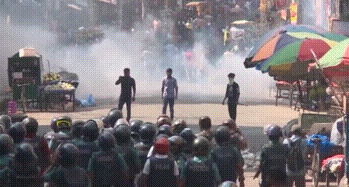

October 30, 2023 - Tens of thousands of striking garment workers took to the streets in Bangladesh, demanding fair wages. Many of the workers make clothes for big Western brands, but get paid only around 75 dollars a month. The unions are demanding a tripling of the wage. [video]/[video]
#bangladesh#strike#workers#industrial action#unions#working class#gif#2023#riot police#garment workers#police#tear gas
2K notes
·
View notes
Text

Solidarity from Bangladesh
ফিলিস্তিন লাল সেলাম!
#free palestine#palestine#bangladesh#bangla tag#from the river to the sea#from the river to the sea palestine will be free
1K notes
·
View notes
Photo

The Captivating Eyes
Photograph: Protap Shekhor Mohanto
#Bangladesh#owl#nature#cute#birds#wildlife#animals#birb#birblr#Photography#Lensblr#Aesthetic#Camera#Curators on tumblr#Peace#Travel#fauna#cute animals#wildlifephotography#peace photography
5K notes
·
View notes
Text



#yemen#jerusalem#tel aviv#current events#palestine#free palestine#gaza#free gaza#news on gaza#palestine news#news update#war news#war on gaza#bangladesh#jordan#south africa#icj hearing#icj#endisraelsgenocide
804 notes
·
View notes
Text


Water lily harvesting in Bangladesh (2016) ph. Zakir Hossain Chowdhury
#water lily#bangladesh#south asia#aesthetic#raincore#watercore#water aesthetic#forestcore#fairycore#photography#naturecore#nature#flowers#flora#cottagecore#earth#earthcore
445 notes
·
View notes
Text


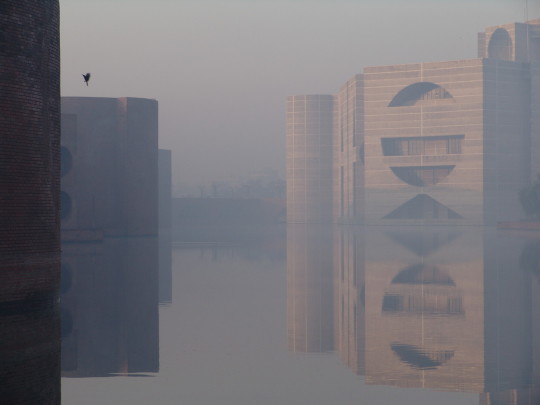
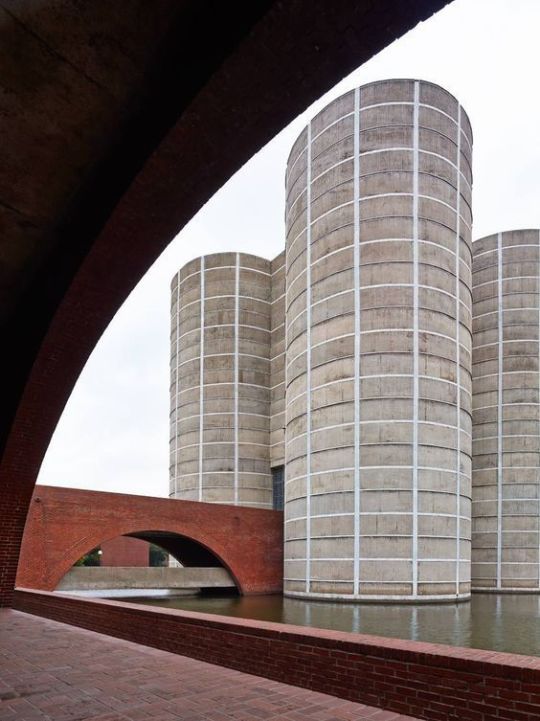



National Assembly Building, Dhaka, Bangladesh - Louis Kahn
-
#Louis Kahn#architecture#building#design#modern architecture#concrete#interiors#form#iconic#modernist#modernism#beautiful architecture#timeless#national assembly#government#dhaka#bangladesh#american architecture#circles#water
1K notes
·
View notes
Text
"Lead is a neurotoxin; it causes premature deaths and lifelong negative effects. It’s said “there is no safe level of lead exposure” — as far as we know, any lead causes damage, and it just gets worse the more exposure there is.
After a 20-year, worldwide campaign, in 2021 Algeria became the final country to end leaded gasoline in cars — something the US phased out in 1996. That should make a huge difference to environmental lead levels. But lots of sources remain, from car batteries to ceramics...
Bangladesh phased out leaded gasoline in the 1990s. But high blood lead levels have remained. Why? When researchers Stephen Luby and Jenny Forsyth, doing work in rural Bangladesh, tried to isolate the source, it turned out to be a surprising one: lead-adulterated turmeric.
Turmeric, a spice in common use for cooking in South Asia and beyond, is yellow, and adding a pigment made of lead chromate makes for bright, vibrant colors — and better sales. Buyers of the adulterated turmeric were slowly being poisoned...
But there’s also good news: A recent paper studying lead in turmeric in Bangladesh found that researchers and the Bangladeshi government appear to have driven lead out of the turmeric business in Bangladesh.
How Bangladesh got serious about lead poisoning
The researchers who’d isolated turmeric as the primary cause of high blood lead levels —working for the nonprofit International Center for Diarrheal Disease Research, Bangladesh — went to meet with government officials. They collected samples nationwide and published a 2019 follow-up paper on the extent of the problem. Bangladesh’s Food Safety Authority got involved.
They settled on a two-part approach, starting with an education campaign to warn people about the dangers of lead. Once people had been warned that lead adulteration was illegal, they followed up with raids to analyze turmeric and fine sellers who were selling adulterated products.
They posted tens of thousands of fliers informing people about the risks of lead. They got coverage in the news. And then they swept through the markets with X-ray fluorescence analyzers, which detect lead. They seized contaminated products and fined sellers.
According to the study released earlier this month, this worked spectacularly well. “The proportion of market turmeric samples containing detectable lead decreased from 47 percent pre-intervention in 2019 to 0 percent in 2021,” the study found. And the vanishing of lead from turmeric had an immediate and dramatic effect on blood lead levels in the affected populations, too: “Blood lead levels dropped a median of 30 percent.”
The researchers who helped make that result happen are gearing up for similar campaigns in other areas where spices are adulterated.
The power of problem-solving
...When the Food Safety Authority showed up at the market and started issuing fines for lead adulteration, it stopped being a savvy business move to add lead. Purchasers who were accustomed to unnatural lead-colored turmeric learned how to recognize non-adulterated turmeric. And so lead went from ubiquitous to nearly nonexistent in the space of just a few years.
That’s a better world for everyone, from turmeric wholesalers to vulnerable kids — all purchased at a shockingly low price. The paper published this month concludes, “with credible information, appropriate technology, and good enough governance, the adulteration of spices can be stopped.”
There’s still a lot more to be done. India, like Bangladesh, has widespread adulteration of turmeric. And safety testing will have to remain vigilant to prevent lead in Bangladesh from creeping back into the spice supply.
But for all those caveats, it’s rare to see such fast, decisive action on a major health problem — and impressive to see it immediately rewarded with such a dramatic improvement in blood lead levels and health outcomes. It’s a reminder that things can change, and can change very quickly, as long as people care, and as long as they act."
-via Vox, September 20, 2023
#lead#lead poisoning#turmeric#bangladesh#south asian food#south asia#public health#public safety#government#good news#hope
739 notes
·
View notes
Photo





Satla, Bangladesh by Muhammad Amdad Hossai
3K notes
·
View notes
Text

Somewhere in Bangladesh
Photographer unknown
#bangladesh#nature#photography#underwater#sea creatures#sea#ocean#blue#yellow#animals#marine biology#art#abstract#aesthetic#nature photography#nature aesthetic#naturecore#landscape#landscape photography#curators on tumblr#green#painting#portrait#oil painting#contemporary art#illustration#graphic design#college#modern art
295 notes
·
View notes
Text


Abbas Attar's photographs of Dhaka on December 16, 1971: when the Pakistani Armed Forces finally surrendered to Mukti Bahini, ending the nine-month Liberation War and 1971 Bangladesh genocide and marking the official secession of East Pakistan to become the new state of Bangladesh. Bangladesh commemorates this day as Victory Day (বিজয় দিবস) to honour the martyrs who laid their lives down in the war.
#বিজয় দিবসের অনেক শুভেচ্ছা সকলকে#and one day we will celebrate a victory day for palestine#bangladesh#bangla tag#victory day#bangladesh liberation war#bengali#south asia#asia#history#historical photos#south asian history#ph#ots#abbas attar#iranian artist
490 notes
·
View notes
